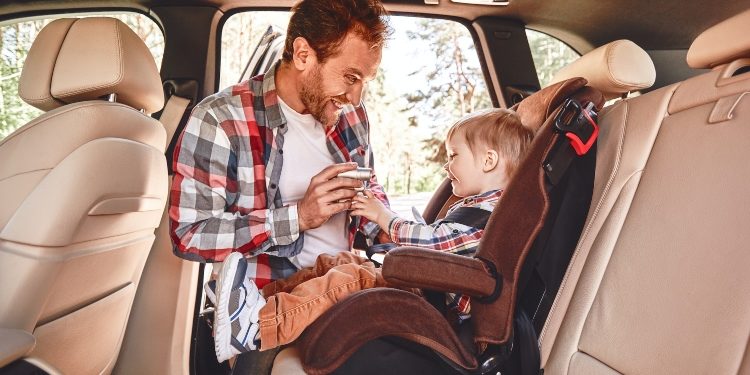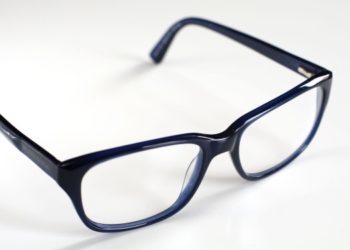When it comes to ensuring the safety of your little one during car rides, nothing is more crucial than the right baby car seats. These specially designed seats are a fundamental component of child safety in vehicles, providing protection that can be a lifesaver in the event of an accident. Choosing the right baby car seat is a significant decision for parents, and it requires careful consideration. In this comprehensive guide, we will explore everything you need to know about baby car seats, from understanding the various types to selecting the perfect one for your child’s age, size, and specific needs.
Table: Types of Baby Car Seats
| Type | Description | Suitable Age Range | Weight Limit |
| 1. Rear-Facing Seat | Designed to face the rear of the vehicle | Birth to 2 years | Varies by model |
| 2. Convertible Seat | Can be used rear-facing or forward-facing | Birth to 2+ years | Varies by model |
| 3. Forward-Facing Seat | Faces forward in the vehicle | 2+ years | Varies by model |
| 4. Booster Seat | Boosts child’s height to use the car’s seat belt | 4+ years | Varies by model |
| 5. All-in-One Seat | Adaptable to various configurations | Birth to 10+ years | Varies by model |
1. Rear-Facing Seat
Rear-facing baby car seats are designed to face the back of the vehicle. They are crucial for infants and young children, offering the best protection for their delicate bodies. The American Academy of Pediatrics (AAP) recommends using a rear-facing seat for as long as possible, typically up to at least two years of age. Many models are suitable for children up to 35 pounds or more, depending on the specific seat. Rear-facing seats provide optimal support for a child’s head, neck, and spine, distributing crash forces across the car seat’s back.
2. Convertible Seat
Convertible seats are versatile options that can be used both in the rear-facing and forward-facing positions. They are suitable for newborns and can be adjusted to accommodate larger children as they grow. Some convertible seats can even accommodate children up to 65 pounds or more when used in the forward-facing position. This adaptability makes convertible seats a cost-effective choice, as they can serve your child for an extended period.
3. Forward-Facing Seat
Forward-facing seats are intended for older toddlers and preschoolers who have outgrown their rear-facing seats. They should be used for children over two years of age and meet the height and weight requirements specified by the car seat manufacturer. These seats are equipped with a harness system to secure the child and provide protection in the event of an accident.
4. Booster Seat
Booster seats are designed for older children who have outgrown their forward-facing car seats but are not yet tall enough for the vehicle’s seat belt to fit them properly. Booster seats elevate the child to the right height so that the seat belt can securely restrain them. Most children are ready for a booster seat around the age of four, and they should continue using one until they reach the height of 4 feet 9 inches and are at least eight years old, according to the AAP.
5. All-in-One Seat
All-in-one car seats are highly adaptable and can be configured to serve different functions, such as rear-facing, forward-facing, and booster modes. These seats are designed to accommodate children from infancy to the age of ten or older, making them a cost-effective choice for parents. While they offer extended usability, it’s essential to check the weight and height limits for each mode to ensure that they meet your child’s needs.
Selecting the Right Baby Car Seat
Choosing the right baby car seat is a crucial decision, and it involves several factors to consider:
- Age and Size of Your Child: The age, weight, and height of your child are critical in determining the appropriate car seat. Different seats have specific guidelines for each stage of growth.
- Installation: Ensure that you can properly install and secure the car seat in your vehicle. The National Highway Traffic Safety Administration (NHTSA) reports that nearly half of all car seats are installed incorrectly, so it’s crucial to follow the manufacturer’s instructions and consult your vehicle’s manual for guidance.
- Safety Standards: Look for car seats that meet the safety standards set by organizations like the NHTSA and the Federal Motor Vehicle Safety Standards. These standards ensure that the car seat has been tested for safety in various crash scenarios.
- Comfort and Convenience: Consider features that enhance your child’s comfort and convenience, such as adjustable harness heights, cup holders, and washable covers.
- Budget: Car seats come in a wide range of prices. While it’s essential to choose a seat that meets safety standards, you can find options that fit your budget.
- Growth Potential: If you plan to use the same seat for an extended period, consider an all-in-one or convertible seat with higher weight and height limits.
- User Reviews: Reading user reviews and ratings can provide valuable insights into the real-world performance and user satisfaction of a particular car seat model.
- Testing and Certification: Check if the car seat has undergone third-party testing and certification by organizations like Consumer Reports and the Insurance Institute for Highway Safety (IIHS).
Recall and Replacement
It’s important to stay informed about any recalls or safety issues related to your baby’s car seat. To check if your car seat has been recalled, you can visit the NHTSA’s recall database or register your car seat with the manufacturer to receive notifications about recalls. If your car seat is recalled, follow the manufacturer’s instructions for repair or replacement.
List: Top 10 Baby Car Seats
Now, let’s take a closer look at the top 10 baby car seats that offer exceptional safety and comfort for your little one:
- Graco 4Ever 4-in-1 Convertible Car Seat: This all-in-one seat can be used from infancy to toddlerhood and beyond. It features a simple and secure installation system and an adjustable headrest.
- Chicco KeyFit 30 Infant Car Seat: Known for its excellent safety ratings and easy installation, the Chicco KeyFit 30 is a top choice for newborns.
- Britax Marathon ClickTight Convertible Car Seat: The ClickTight installation system makes securing this seat a breeze. It offers multiple recline positions for your child’s comfort.
- Evenflo Symphony DLX All-in-One Car Seat: This affordable all-in-one seat accommodates children from 5 to 110 pounds and offers multiple recline positions.
- Safety 1st Grow and Go 3-in-1 Convertible Car Seat: With three modes and a simple harness adjustment system, this car seat grows with your child.
- Maxi-Cosi Pria 85 Max Convertible Car Seat: This convertible seat offers plush cushioning and adjustable harness heights for a comfortable ride.
- Clek Foonf Convertible Car Seat: The Clek Foonf is known for its advanced safety features and high-quality materials.
- Peg Perego Primo Viaggio 4-35 Infant Car Seat: This infant car seat is known for its European styling and easy-to-adjust harness.
- Diono Radian 3RXT All-in-One Convertible Car Seat: With steel reinforcement and a narrow profile, this seat is great for families with multiple car seats.
- Nuna RAVA Convertible Car Seat: The Nuna RAVA offers an easy installation system and numerous recline positions for your child’s comfort.
Conclusion
Selecting the right baby car seat is a crucial decision for parents and caregivers. It’s a choice that directly impacts the safety and well-being of your child during car journeys. By understanding the different types of car seats, considering your child’s age and size, and evaluating factors like safety standards, installation, and user reviews, you can make an informed decision. Always prioritize the safety and comfort of your child when choosing a baby car seat, and stay informed about any recalls or updates related to your selected model. With the right baby car seat, you can enjoy peace of mind as you travel with your little one, knowing they are protected and secure.
David Prior
David Prior is the editor of Today News, responsible for the overall editorial strategy. He is an NCTJ-qualified journalist with over 20 years’ experience, and is also editor of the award-winning hyperlocal news title Altrincham Today. His LinkedIn profile is here.













































































